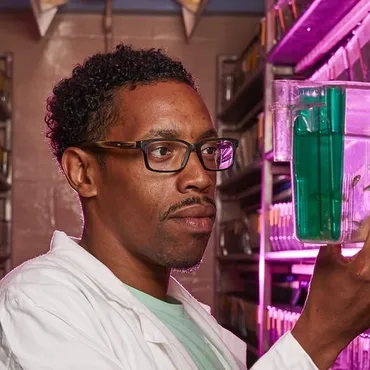Exploring the potential of AI chatbots
Can chatbots and AI technology improve efficiency and save resources for councils across the UK?
Oxford City Council

The challenge
Are chatbots worth using for councils?
Our 8-week discovery looked at the potential for helping:
- Citizens to engage with council services more easily
- Increase councils’ efficiency in delivering services using chatbots
- Reduce the burden on call centres (and saving money)
By focusing on four services, we were able to gather the data to truly understand if and where AI chatbots could help.
- Planning
- Waste and recycling
- Revenues and benefits
- Highways
Our approach
Let's get started
We needed to learn as much as we could, as quickly as possible and then validate those findings. To uncover the customer needs in each council service area, we:
- Heard from real users: We conducted user interviews to understand citizens’ needs of council services, and how they contacted their councils.
- Listened to staff and stakeholders: Taking the time to truly understand councils’ internal needs, structure, and how service provision is managed.
- Analysed business data: A review to understand council website and phone line use, with a view to establishing the service with the greatest potential return on investment
- Created useful documentation: To share our findings in an understandable way for the councils and the government sponsors

A show and tell session
Creating a strong team
We formed a blended team, incorporating 20 stakeholders from 13 different councils. Working in a large team from a range of professional backgrounds, spread across the UK, meant we needed to create processes that would allow for collaboration and speed.
Our goal is always to leave teams and individuals more skilled than when they started, and so during our sprints we also:
- Shared our findings: Regular meetings to share findings and foster a culture of openness and collaboration, including a project blog for other councils to follow along.
- Upskilled the blended team: Training on UX research tools and techniques.
The team had differing levels of experience with technology, user research, and collaborative project management so we concentrated on sharing knowledge to create value.
What we learned
We learned that waste and recycling services are a good fit for a chatbot
Here’s why:
Waste and recycling issues make up a high proportion of calls into councils.
Nearly all these calls are requesting basic information or are task-based enquiries suitable for handling by a chatbot – with comparatively few complex calls requiring second-line intervention.
Because there are relatively few distinct reasons for getting in touch about waste and recycling, a chatbot could easily handle the permutations.
Our research showed that users would rather self-serve online, and only call as a last resort.
Users don’t want to call, and yet they have to, which is expensive for them and the council.
A chatbot would serve users in a way that they want, freeing up call-centre agents to focus on the calls where human conversation is essential.
What’s more, because the provision of waste and recycling services is consistent across different councils, meaning investment in a chatbot could be shared across a number of collaborating councils.
The outcomes
There are big savings to be made
A single council investing in a chatbot for waste and recycling services could save £38,000 in the first year. This takes into account the costs of building and training the conversational AI.
But there’s more.
If every council built their own waste and recycling chatbot in isolation, while potential savings exist, return on investment would be limited because of the enormous duplication of effort.
We calculated that if 20 councils were to collaborate on this, it would be reasonable to estimate total savings across the participating councils at £2.2m annually.
Our work in 8 weeks uncovered the path to more than £2m of savings. Imagine the potential savings across more services.
We were delighted with how well Torchbox responded to the challenging timetable of our project, and how well they led us through its delivery. Their flexible approach, expert knowledge and high quality reports were significant elements in making the project a success.
Next steps
Uncovering the potential for huge ROI
We proved that it’s worth learning more about this idea. This small piece of work has uncovered the potential for huge return on investment.
We’d like to advance to an Alpha stage, during which we could look to begin developing a chatbot, carrying forward the culture of collaborating with multiple councils.
We also made recommendations to address other user needs and frustrations by making improvements to council websites, including site structure, navigation and search functionality.
Our report on this project has been published and shared with the Ministry of Housing, Communities and Local Government.



